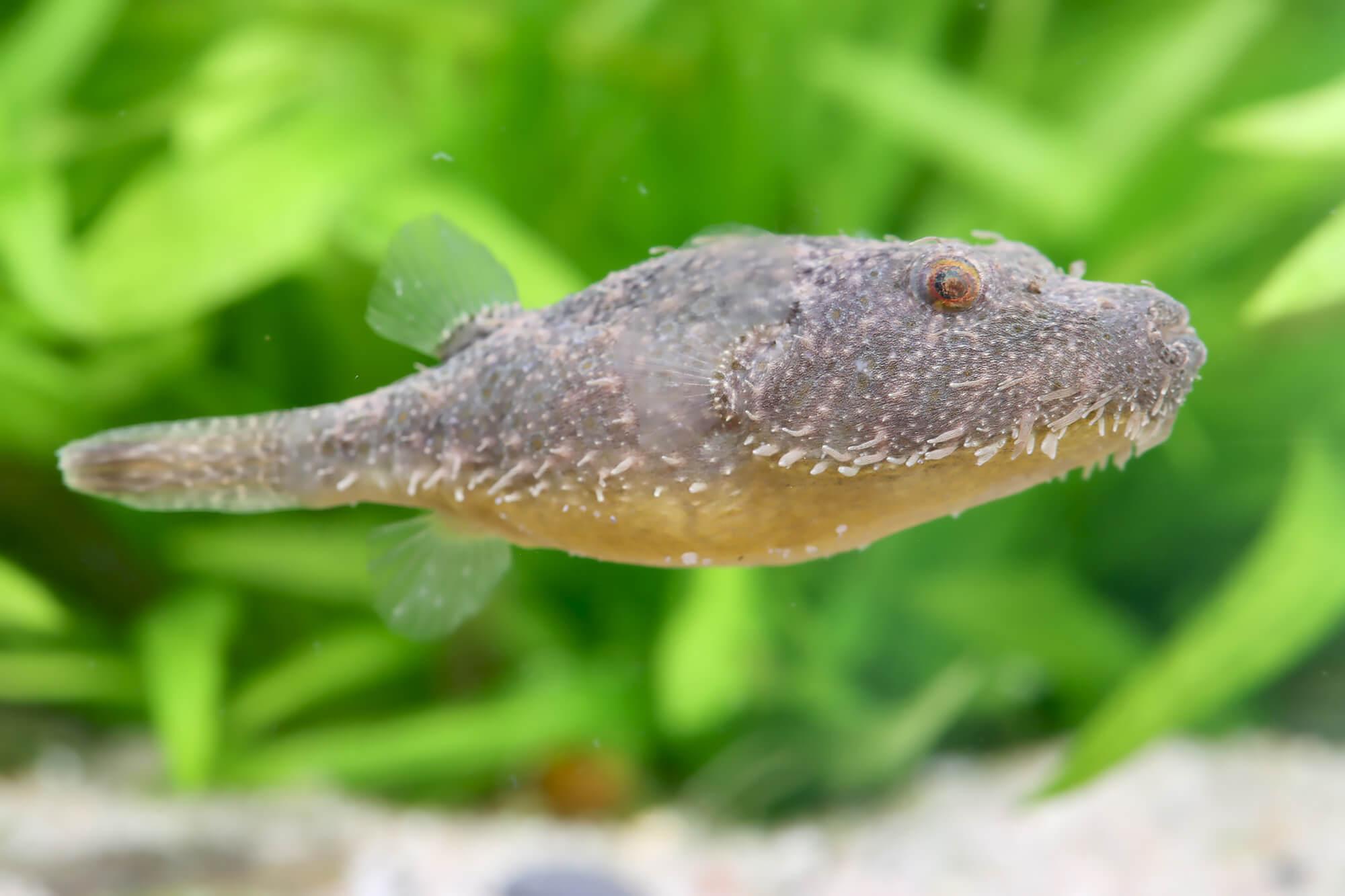Keep puffer fish in aquarium
Small fishes huge
Nearly 200 species belong to the family of the puffer fishes, better the so-called Tetraodontidae, if we count the suborders and 25 genera , besides, the animals are classified in round-headed and pointed-headed puffer fishes . Here we meet from almost tiny specimens with just barely 2 cm total body length to their next to gigantic looking big brothers, which can reach over one meter . But by no means all of these species, which already stand out purely externally from the usual "standard fish", have found their way into the domestic aquarium, also puffer fish differ in their occurrence: some are pure sea dwellers, others originate from the freshwater and again some from areas where freshwater and saltwater meet: the brackish water.
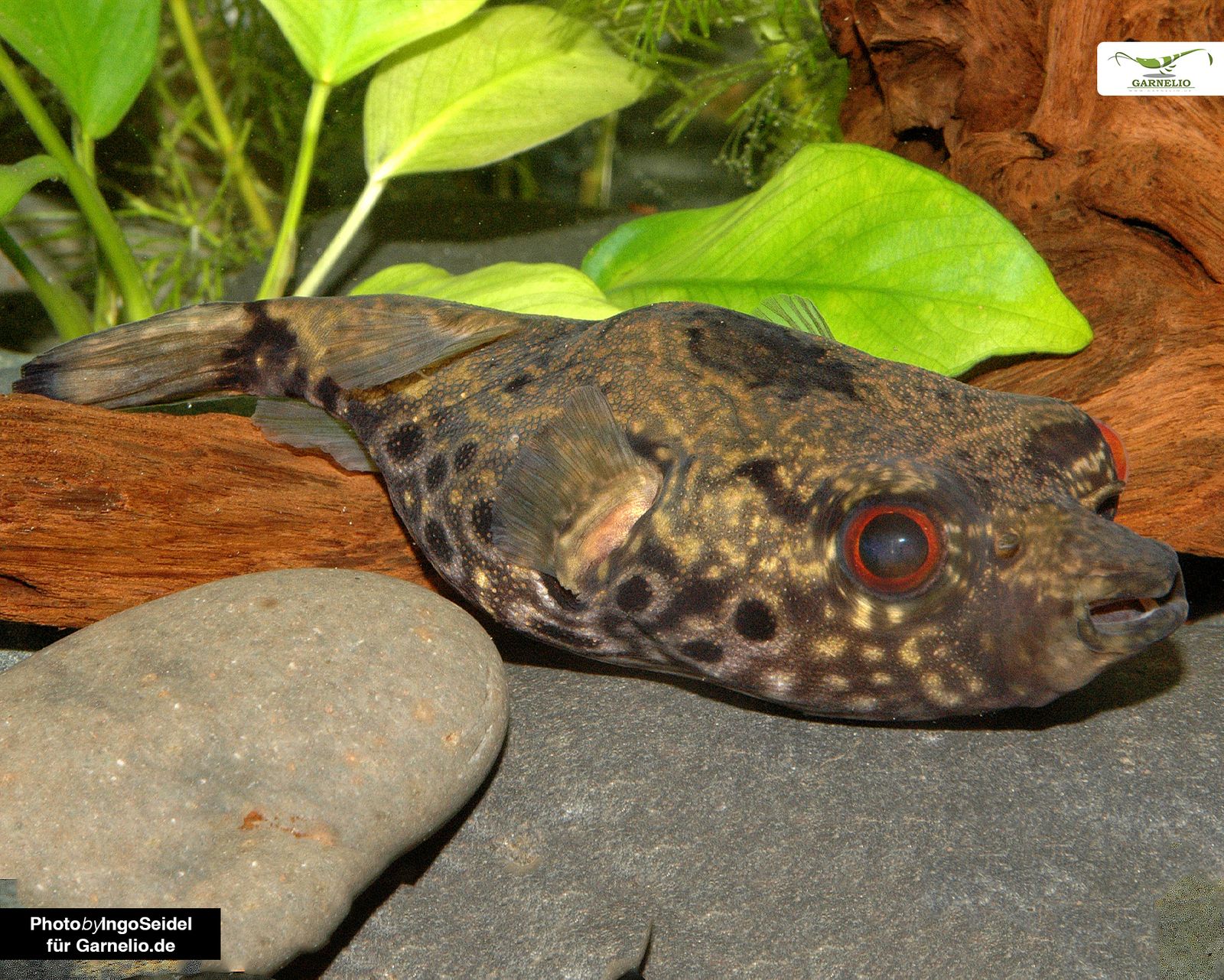
Occurrence in nature
A large proportion of pufferfish species originate from the Amazon River basin, which includes the Rio Anapu and Rio Tocantins, covering almost the entire northern half of South America. In addition, pufferfish occurrences exist in Africa, East Indies and especially in Southeast Asia. Their habitats are primarily located near the shore of tropical and thus rather warmer marine waters. Roughly summarized, pufferfish populations range worldwide from 47 ° north to 47 ° south latitude. Interestingly, some species of Tetraodon hatch predominantly in freshwater, although their parents tend to reside in brackish water areas. This is one of the reasons why "freshwater puffers" are often offered in the trade, but in fact they should rather be kept in brackish water. Since the different puffers differ in their demands on their environment and their water requirements, we will go into more detail in our profiles. Some pufferfishes inhabit open water reefs, while others are found in areas with more vegetation in the form of seagrass . Pufferfish also have certain requirements in the aquarium that need to be implemented in order to maintain these great animals as true to nature as possible.
Appearance
Especially their spherical appearance is very different from the otherwise rather ordinary fish figure we usually know. Her plump appearance and the rather slow locomotion in combination with the beady eyes definitely serve the childish scheme and thus hit our nerve to find her "cute". Especially the head part, but also the googly eyes and even her bird-like beak mouth stand out immediately. Their powerful jaws have two strong teeth in the upper and lower jaws, fused into ridges, which were among the namesakes of their scientific species name, which is composed of "tetra" for four and "odontidae" for teeth: the four-toothed. Pufferfishes are among the highly evolved bony fishes. Instead of a scaled body as we know it from other fishes, they have a leathery and naked skin, on which are scales transformed into small spines . Almost only upon closer inspection do they also notice that they lack the pelvic fin .
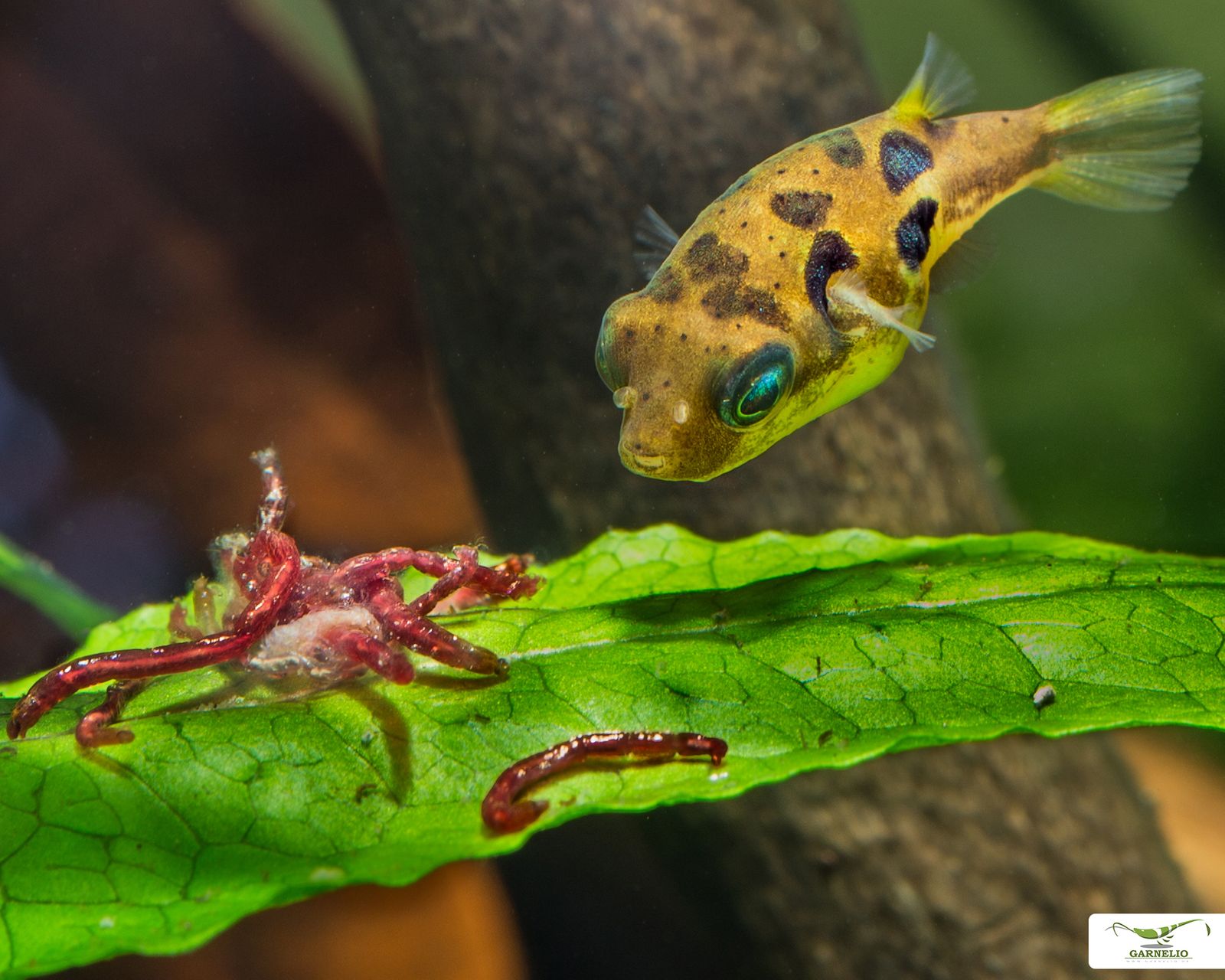
Locomotion
Pufferfishes move rather leisurely and very interestingly at that, yet they are amazingly fast at quick changes of direction. They mainly paddle through the water with their rather small pectoral fins, hardly using their dorsal and anal fins. To change direction they use their tail fin, sometimes holding it at different angles in a rather curious way. They can swim both forward and backward while doing this, and can also climb up or down.
Behavior
Probably one of the most well-known phenomena of pufferfish is their ability to "blow up" many times over. In fact, some almost don't recognize the pufferfish in its "normal state" because they only think of it as a spherical ball. Pufferfish have the ability to inflate themselves in case of danger, but also under stress , so that they no longer fit into almost any mouth of predators simply because of their ball-shaped appearance, but also their increased size. A very effective and also clever survival strategy, because even "at the last second" inflated, the puffer fish thereby remains stuck in the mouth of his attacker, so that the latter suffocates. Above all, it can additionally erect its small spines, which thus simultaneously prevent swallowing the puffer fish . The puffer fish is able to do this by means of a stomach expansion, which functions like a sealed pouch. Into it it presses then intermittently water quantities from the mouth. Even when moving puffer fish swallow- but air- which they themselves can choke on. Often one finds such "inflated" and unfortunately dried up specimens on the beach of seas in which they occur. Understandably, the process of this "defense by size change" is also associated with great stress for him, because he must both first be outside his danger zone and also get rid of the still, in proportion, very large amount of water again.
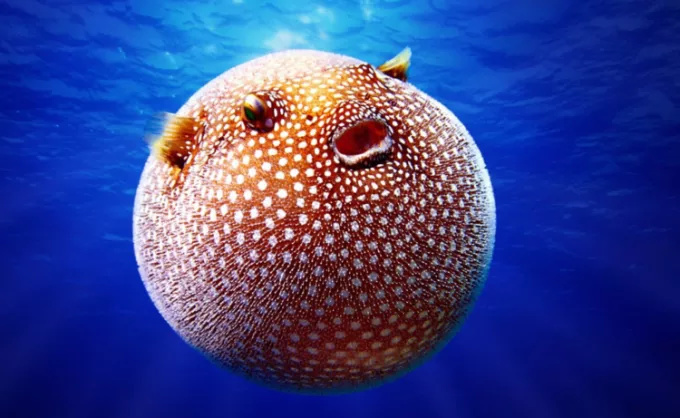
More than just a bullhead - puffer fish are strong personalities
Both in the aquarium, but also when diving, puffer fish are rather introverted and reserved comrades, who do not necessarily want to get close and prefer to withdraw. Nevertheless they know themselves however also here quite to help, if them too much on the fur is moved: with their pronounced and very strong teeth bite them firmly too. Depending on the size of the puffer fish, this can even lead to biting off of limbs . At the very least, however, it can lead to serious injuries with sometimes pronounced infections, since a puffer fish mouth is anything but a sterile environment and a wide variety of bacteria from its oral mucosa, which are mainly transferred there by the food animals it consumes, can settle in the wound and thus result in a long course of disease .
On the other hand puffer fishes in captivity are unbelievable animals with a strong character , which even like to be entertained , at least they are quite docile: interestingly, marine puffer fishes, especially those from the family of Canthigaster, which until their arrival in the aquarium only knew the big wide sea, could already be attracted after very short time and fed from the tweezers, in a very calm environment they even ate shrimps from the hand- which, however, is not an invitation to imitate! Remarkable was also that they seemed to be able to keep their keepers apart and were already waiting. (What is perhaps not completely amazing, because what should do a fish, which knew so far only the endless underwater pareia, also different) Ultimately it is however presumably also because of their unbelievable appetite, so that even smaller KuFi species at the buffet know how to defend themselves against their fellow fishes to and fight their way to first place . However, one should be careful not to overfeed the animals.
But also in freshwater it is noticeable that Tetraodontidae are almost bored and like to occupy themselves with their keeper . Since most pufferfishes either need a lot of space or are difficult to socialize with other fishes, they partly build up a very intimate relationship with their keepers, which is why they are very popular among others.
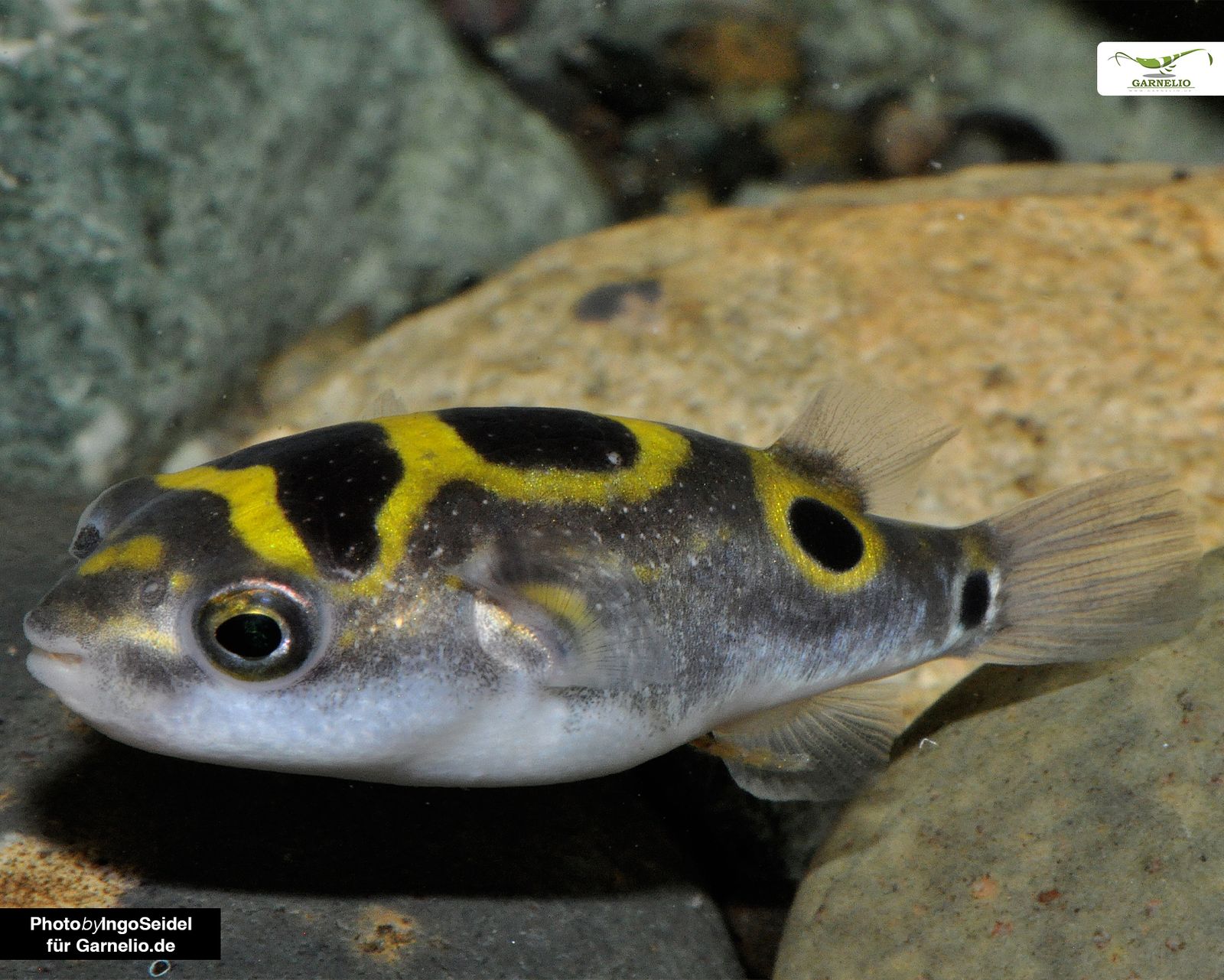
Life expectancy
Pufferfishes can, depending on the species, reach a sometimes proud age of up to 20 years and in some places even more . Smaller species, such as the dwarf pufferfish, on the other hand, tend to accompany their keeper only just 5 years. The life expectancy of a puffer fish is directly related to the parameters it is offered. Indispensable is therefore also a very good water hygiene and a very good filtering and circulation of its aquarium water, in addition a food adapted to its organism: Above all for its constantly regrowing teeth it needs absolutely hard-shelled mollusks, as for example snails and also mussels, so that it can trim these regularly , in addition, other armored invertebrates, as for example crab Just its preference for snails, which are a vital part of its diet, make it therefore so popular especially in the aquarium and often puffer fish are touted as means of choice with rampant snail populations . However, it is unfortunately often disregarded that the puffer fish also other demands on its attitude, which may not be given or feasible every time.
Species-appropriate feeding
So, as we now know, puffer fish require a rather fancy menu and thus belong to the partially predatory, but in any case to the carnivorous feeding specialists that need to constantly grind down their teeth. Otherwise, these can assume such proportions that their jaws virtually grow together and they would starve to death. Generally they reject commercial canned food as ornamental fish in the aquarium eat it, such as granulated food, food tablets or flake food almost in principle. However, they can be fed with Live food but also with Frozen food which are made from insect larvae like for example Mosquito larvaebut also crustaceans like Artemia consist. Krill and mussel meat and even fish fillet in small pieces they accept almost without problems, some can even be fed with live shrimp, snails and small fish , especially the need for Food snails is high, so you can buy them from us in store !
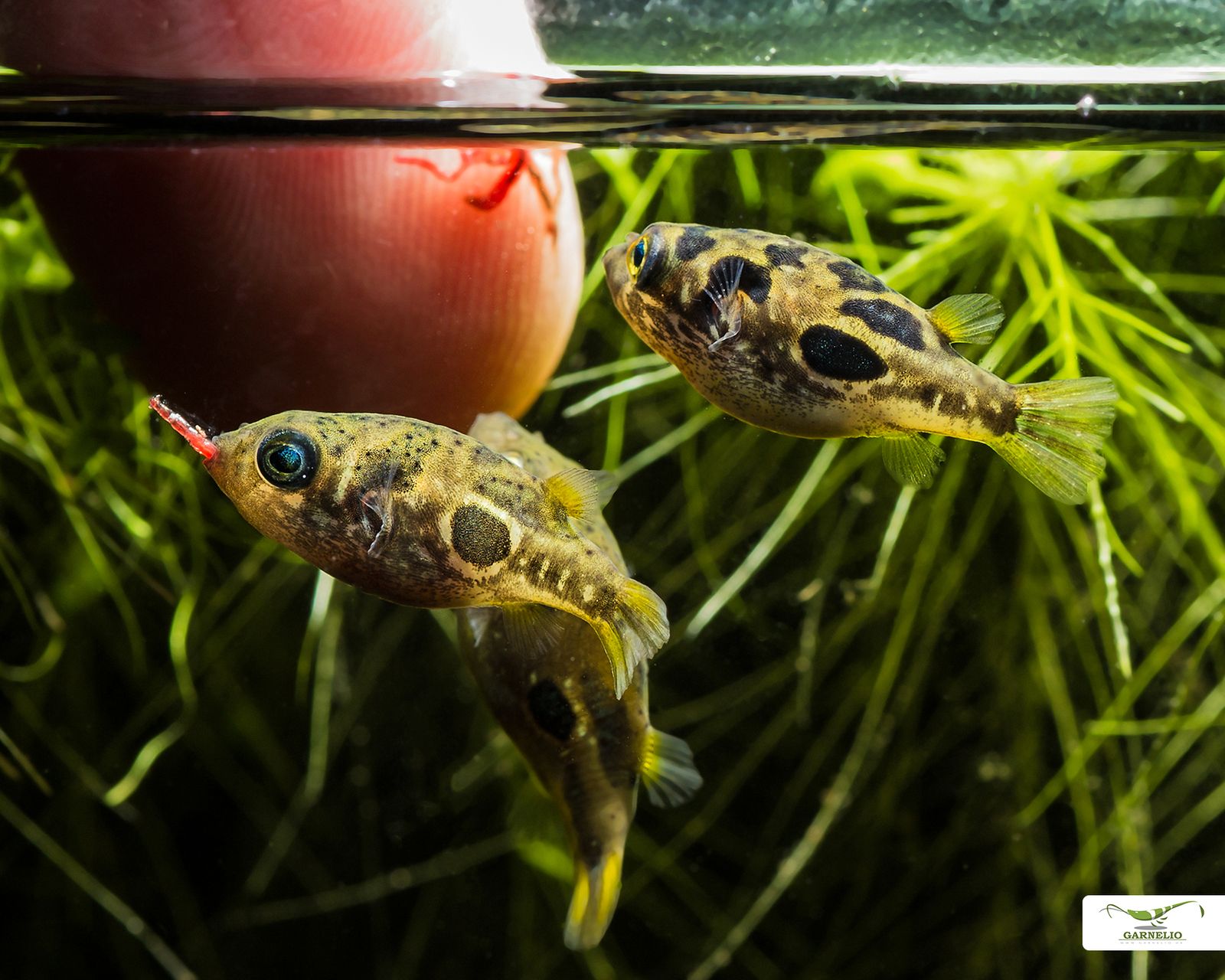
Puffer fish in the aquarium - exotic fish!
If we refer to the habitats from which the KuFis actually originate, almost every species has its very personal preferences with regard to its temperature requirements, but also to the water parameters, which can have a wide range in the species maintained in the aquarium.
But in order.
Which puffer fish are then the most common species represented in the aquarium hobby?
In the freshwater is probably by far the best known the small Indian dwarf puffer fish, Carinotetraodon travancoricus, followed by the Brown Pufferfish, Tetraodon miurus, the Assel Pufferfish, Colomesus asellus up to the Palembang Pufferfish, also as Tetraodon biocellatus known as. Some species are sometimes difficult to distinguish because of their appearance or origin, but also because of their declaration, as is the case for example with the Tetraodon nigroviridis, the green puffer fish, but also occurs with the Palembang puffer fish, which in turn exists among others as the "Genuine Palembang puffer fish" with the scientific species name Tetraodon palembangensis . Some of these species are pure freshwater dwellers, others require salt additions and fluctuations, and others are pure brackish water dwellers. So an accurate inform about the respective requirements actively promotes the well-being of these fascinating exotics.
Frequently in seawater maintained species are mainly from the series of Canthigaster, especially Canthigaster bennetti- Bennets puffer fish, the rather less colorful Canthigaster compressa- also known as labyrinth puffer fish, as well as the Cathigaster leoparda- Leopard puffer fish, the Canthigaster papua- False-eyed puffer fish, the Canthigaster smithae- Two-colored Toby and last but not least the two most common: Canthigaster solandri and Canthigaster valentini, the eye spotted pointyhead and the saddle pointyhead pufferfish. Apart from these, the Arothon nigropunctatus- Blackspotted Pufferfish is also found more and more often in the trade, occasionally also the beautiful Lactophrys triqueter- Pearl Pufferfish.
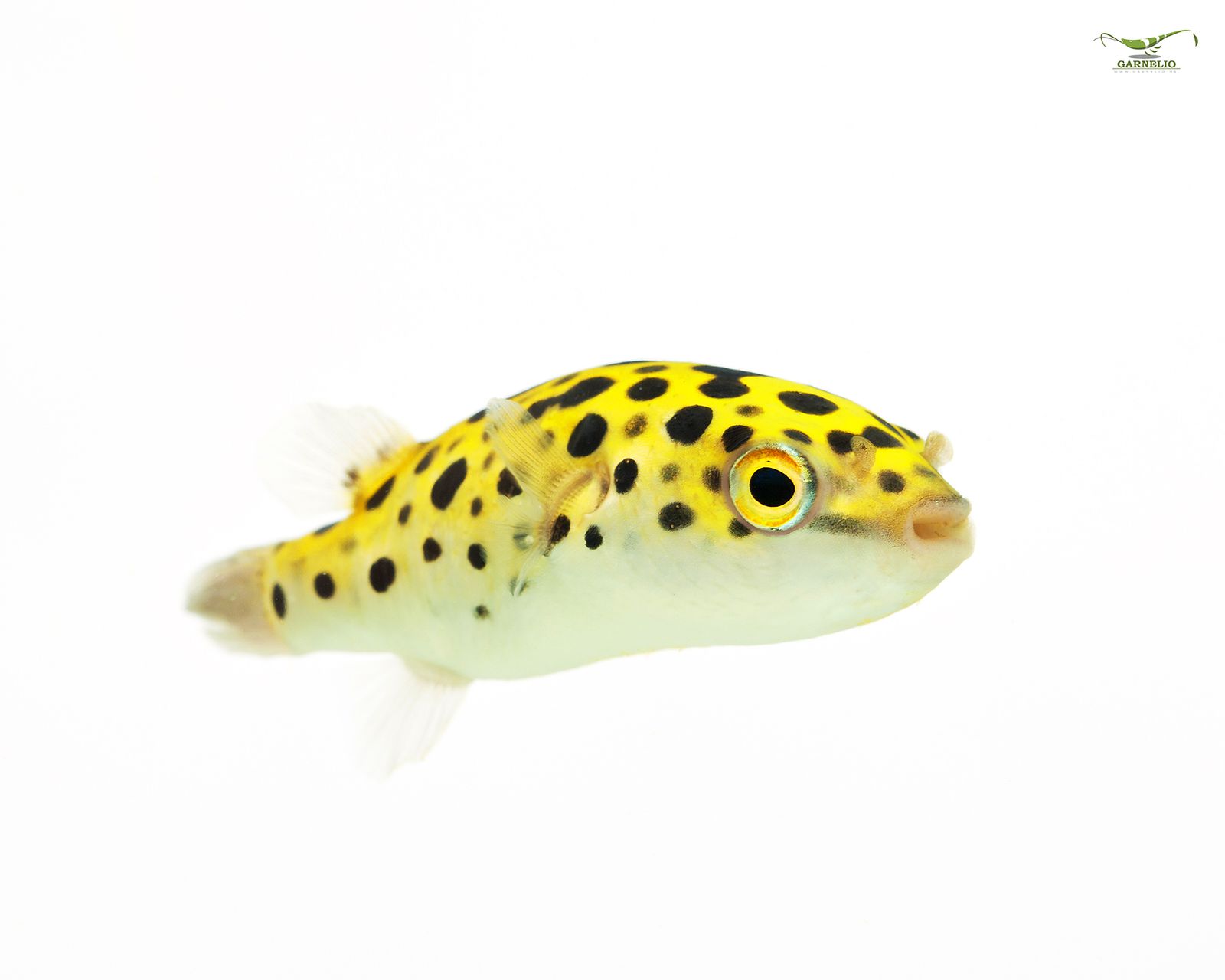
Keeping and Socialization
Most pufferfish are not a distinct social fish, which is why they are often kept individually , as they can become quite rowdy and territorial comrades that can seriously beat the crap out of their own buddies, as well as other fellow fish. Larger specimens are even capable of biting live fish to death. The substrate for puffer fish should basically consist of a thick layer of sand , because they sometimes even burrow into it. A dense planting serves them as a retreat, but also as a lurking position, because they like to chase their food and can become amazingly fast. Some structuring in the form of stones and roots serve them as territorial markers, among other things. Some species also prefer a certain amount of current, but in places also a rather dimmed lighting, which is excellently produced with a floating plant cover of mussel flowers or tussock fern, but also for example with lotus plants, whose leaves rest on the water surface. Due to the very pronounced metabolism the aquarium should absolutely have a sufficiently dimensioned filter , which circulates the water , but also removes corresponding excreta and waste products, just as important is the regular and thorough suction of the substrate with a Mulmglocke. In any case, the needs of the respective species should be taken into account, also with regard to the required aquarium size and especially with regard to the water values, because some species quickly become ill in pure freshwater. In and of itself, most species can be kept at a total hardness between 5-15 °dGH and a pH of 6-7.5 with a temperature between 22 to 28 °C . With fluctuating water parameters with salt additions it is imperative to pay attention to a corresponding sufficient aeration .
Breeding puffer fish
In general, not as much is known about the breeding of puffer fishes as with other fishes. However, probably also here changed water parameters with a change from fresh and brackish water play a role.
However, there are breeding reports about successful reproduction of dwarf puffers : During the courtship the male pursued the female in almost prancing movements and rubbed against her body again and again. Thereby it even changed its physique and became more and more square, the females however remained round, also it changed its color and formed new belly lines and brown tones, the yellow tones however intensified, its body patterning formed itself line-shaped around. Its goal here is to attract the female to a spawning substrate : Java moss, an evergreen in the proverbial sense, was very gladly accepted here. It almost had the appearance of kissing and cuddling when the male snuggled up to the female and both released their eggs into the spawning substrate under approx. 5-10 second rhythmic movements, standing next to each other. Immediately following, the female was driven away and guarded the eggs, during which time feeding also ceased almost completely. The clear and approximately 1 mm sized eggs developed in a very short time in this report, from which the first young hatched after already 5 days . They feed on their yolk sac and for the most part, as is common for fish young, are rather immobile in the early stages. Four days after hatching they were already able to swim freely, and after a week they had already reached a size of 3mm. They could be fed with very fine live food , but since nauplii were described as too large , they were most likely microworms or infusoria. Strikingly, larger and older juveniles preyed on their younger and smaller siblings while also decimating their populations. At one month one could already see the body structure typical for their species , although they had not yet fully developed their colors . However, they do chase their spawn, which is why incubation and rearing in a nursery aquarium is a good idea.
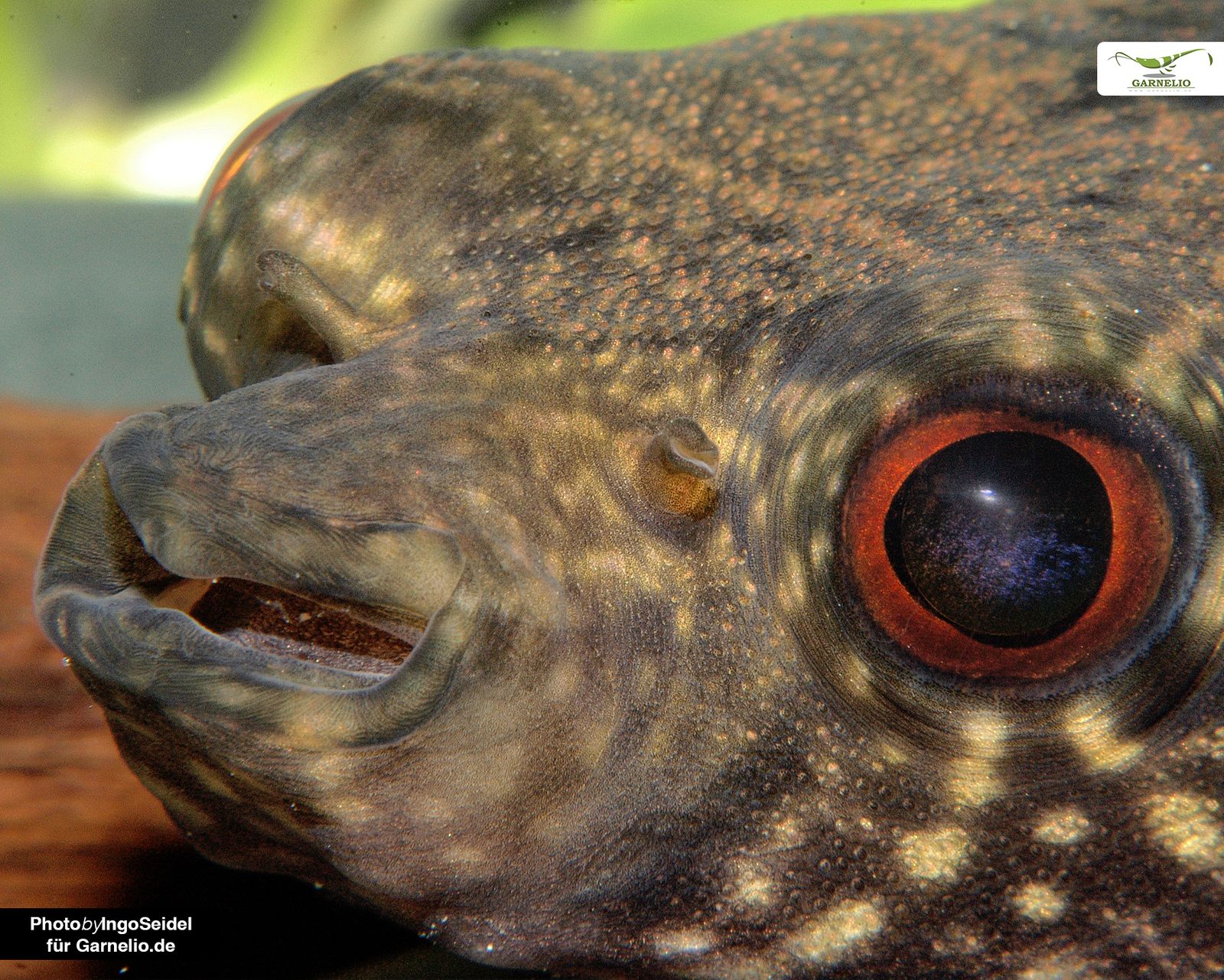
Poisonousness, Japanese cuisine and genetics
Pufferfish are poisonous, in demand and unusual. But this was probably already to be suspected. The best known is probably the Fugu puffer fish, which is an absolute delicacy in its home area and ends up on the menu at top prices . Interestingly not only the Fugu cooks must go through a completely special two-year training in a so-called Fugu restaurant with final examination , in order to be allowed to prepare these fish at all - also each catcher and dealer is condemned to it to possess a special Fugu license . And rightly so! The whole special preparation technique of the Takifugu rubripes, as one of those Fugu puffer fish is called, requires really extraordinary skills, if you didn't want to cook your guests half dead: Theoretically seen only the muscle meat of the fish is non-toxic. Anyone who has ever filleted a smoked trout themselves, but also the fishermen among the aquarists, know about the precision work when it is important not to accidentally pierce or cut the internal organs such as the intestines, liver or roe, nor the skin. That this preparation demands its appropriate tribute is obvious and thus Fugu is considered as very expensive delicacy, which represents thereby a Japanese status symbol , which will remain simply withheld to a majority of the population.
It is often read that puffer fish absorb their poison, the so-called tetrodontoxin, an extraordinary paralyzing muscle poison, which we will discuss later, solely via the bacteria, in particular Vibrio bacteria, in their food of their natural habitat. It has been proven in the meantime that puffer fish bred in captivity and kept individually do not develop tetrodontoxin, but that this develops as soon as they are back in the wild. On the other hand, there are reports that these non-toxic pufferfish can also form toxins once they enter captivity contact with wild-caught . However, since the toxin formation could still not be conclusively clarified, the Japanese Ministry of Health prohibits the trade of certain species.
No wonder, then, that scientists have pounced on these animals with a thirst for research, exploring, among other things, the gene sequences but also their remarkable toxicity: Tetrodontoxin is a paralyzing muscle toxin produced primarily by individual sea creatures, but also others, apart from the puffer fish, various hedgehog fish, Western American newts, certain frog species, various invertebrates including crabs, starfish and snails, but also a species of octopus and flatworm species .
It is not until about three quarters of an hour after intoxication that it becomes noticeable with the first signs : Beginning with increasing perception and coordination disturbances, as well as numbness in the extremities, it goes along with a from then on quite rapid and increasing paralysis of the skeletal musculature up to over the respiratory musculature , which goes along in the end in a severe respiratory insufficiency, collapse and finally the death . In this case, the patient is fully conscious 0 and unable to make himself heard. However, oral poisoning allows more time to save life than, for example, an intravenous injection. Above all medical coal serves here the first aid. Usually the first 24 hours after poisoning decide about life and death, until the poison has been brought out of the body. As the strongest known non-protein toxin , it is surpassed in effect only by maitotoxin .
As with so many poisons that occur in nature, tetrodontoxin was looked at more closely and experimented with accordingly - and this has been the case since 1909! Especially in biophysics and neuroscience it is used for deliberate blocking of sodium channels. Currently, experimental trials exist for its use in cancer diagnostics, as it has pain-inhibiting effects; it also serves as an antidote to batrachotoxin, which poison dart frogs produce.
Does tetrodontoxin now play a role in aquarium husbandry?
Certainly puffer fish are not cuddly fish and definitely not guppies- they require a certain aquaristic previous experience and thus also a specified knowledge advantage regarding the handling appropriate to their species . Deceased puffer fish, especially large marine specimens, should be removed from the aquarium immediately after discovery with a landing net and the water generously changed and also treated . That fish are rather rarely stroked goes without saying in and of itself- also one should keep in mind that the toxicity and the potential danger of causing oneself serious harm depends on the species. With a healthy common sense and the necessary respect for the cultivated living being, accidents with tetrodontoxin in aquaristics are therefore rather a absolute rarity . The visibly hung telephone number of the poison emergency should be with the attitude of potentially deadly poisonous animals therefore a matter of course , so that first responders receive prompt support with the first aid.
These are the country-specific poison control numbers:
Germany: Giftnotruf Berlin 030-19240
Austria: Vergiftungsinformationszentrale Wien +43 (0)1/4064343
Switzerland: Tox Info Suisse +41442515151
Overview of particularly popular species
From freshwater introduce yourself:
Tetraodon biocellatus - eyespot pufferfish
This handsome fellow can become very trusting, but with increasing age it becomes territorial and aggressive, both towards conspecifics and fellow fish. Should therefore rather be kept alone from 80 cm edge length, even if it becomes only scarcely 8 cm large.
Water values: GH 5-20 °dGH, KH 4-8 °dKH, pH 7,0-8,5, Temperature 22-28 °C
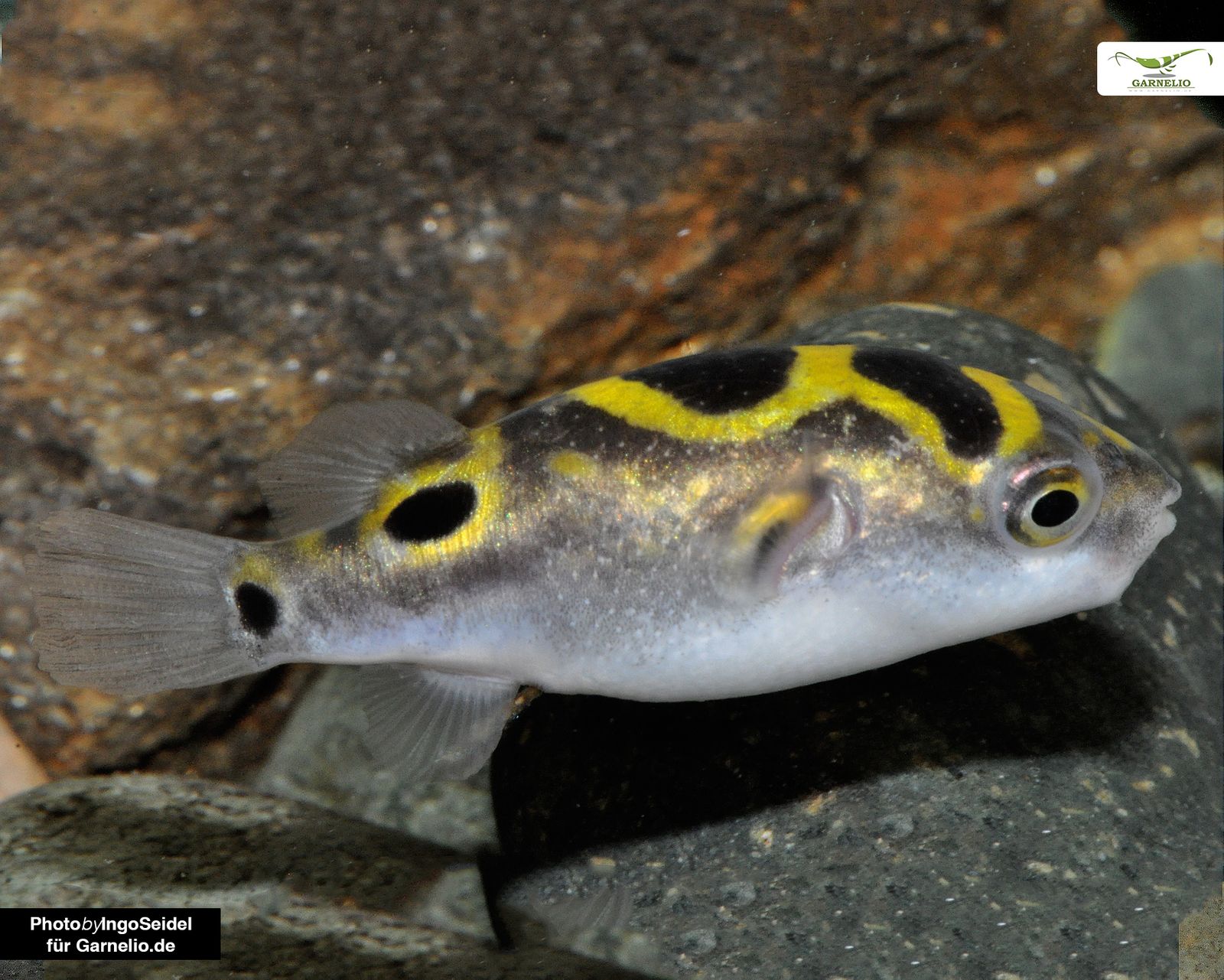
Tetraodon nigroviridis - Green pufferfish
Although sometimes confused, the Green Pufferfish is a real rocket when it comes to decimating a snail population. Actually it originates from brackish water, which is why its aquarium water should be salinated with 4-8 g/l - don't forget an increased oxygen supply (but without current)! With proud 17 cm it needs not only an aquarium from at least 300 liters, also a socialization with alien animals is practically impossible, because it cracks in the twinkling of an eye all invertebrates and occasionally even fish. A good structure in the aquarium is essential for him. It can even be bred, but if kept in pairs, the aquarium should be appropriately large and structured.
Water parameters: GH 10 to 30, KH 5-20, pH 7 to 8.5, temperature 24 to 28 °C, salinity 4-8 g/l
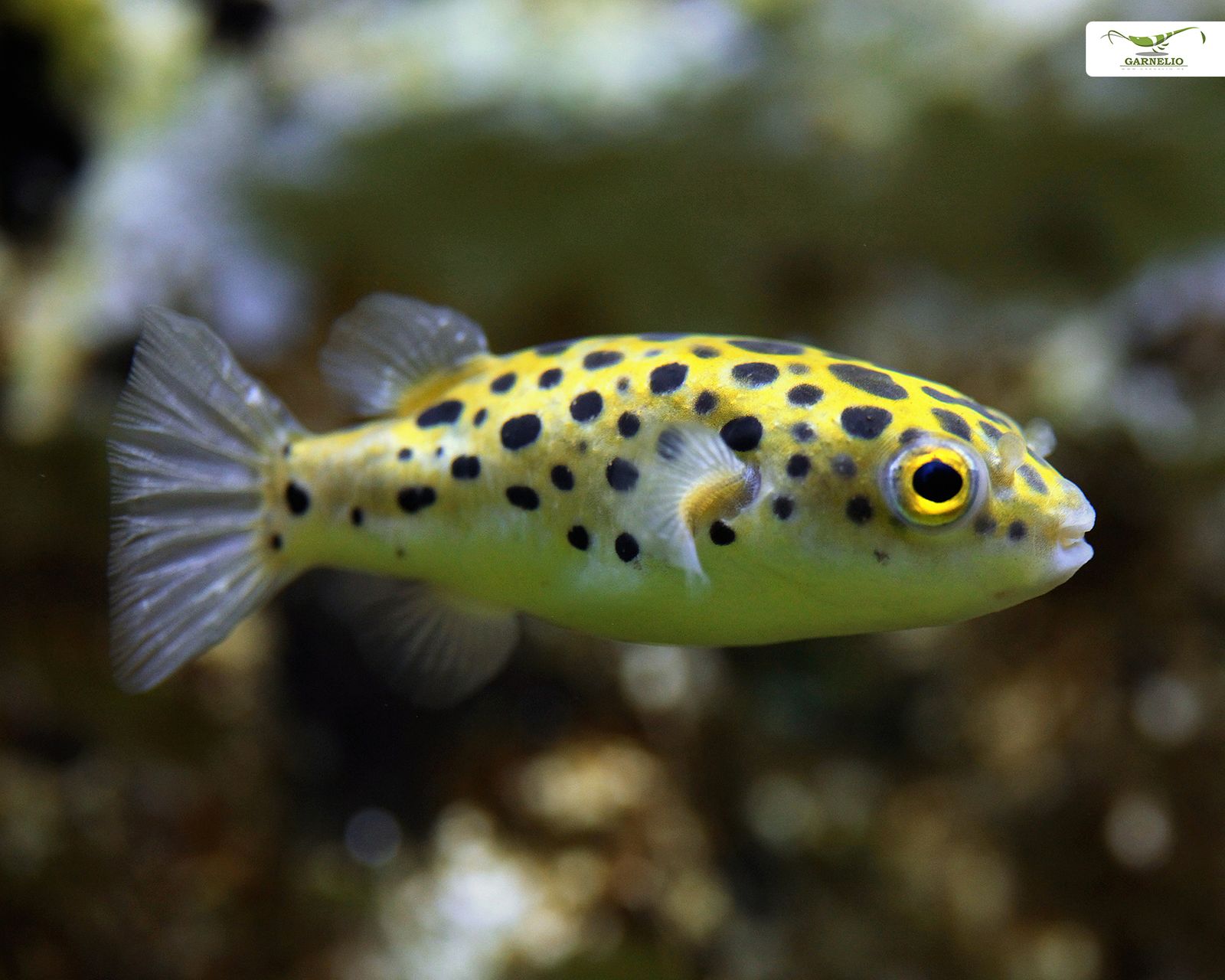
Tetraodon palembangensis - True Palembang Pufferfish
Stands out immediately with its large googly eyes and great giraffe pattern and is a pure freshwater puffer from Sumatra. He is quite confused with T. biocellatus. The Palembang grows to almost 20 cm and is an excellent lurker. A socialization with similarly large other fish can be quite successful, also the pairwise attitude starting from at least 120 cm edge length. Can become territorial and aggressive in places, a very good aquarium structure should therefore be given.
Water values: GH 5°-20° dGH, KH 2-8° dKH, pH 6.0-7.5, temperature24°-28° C
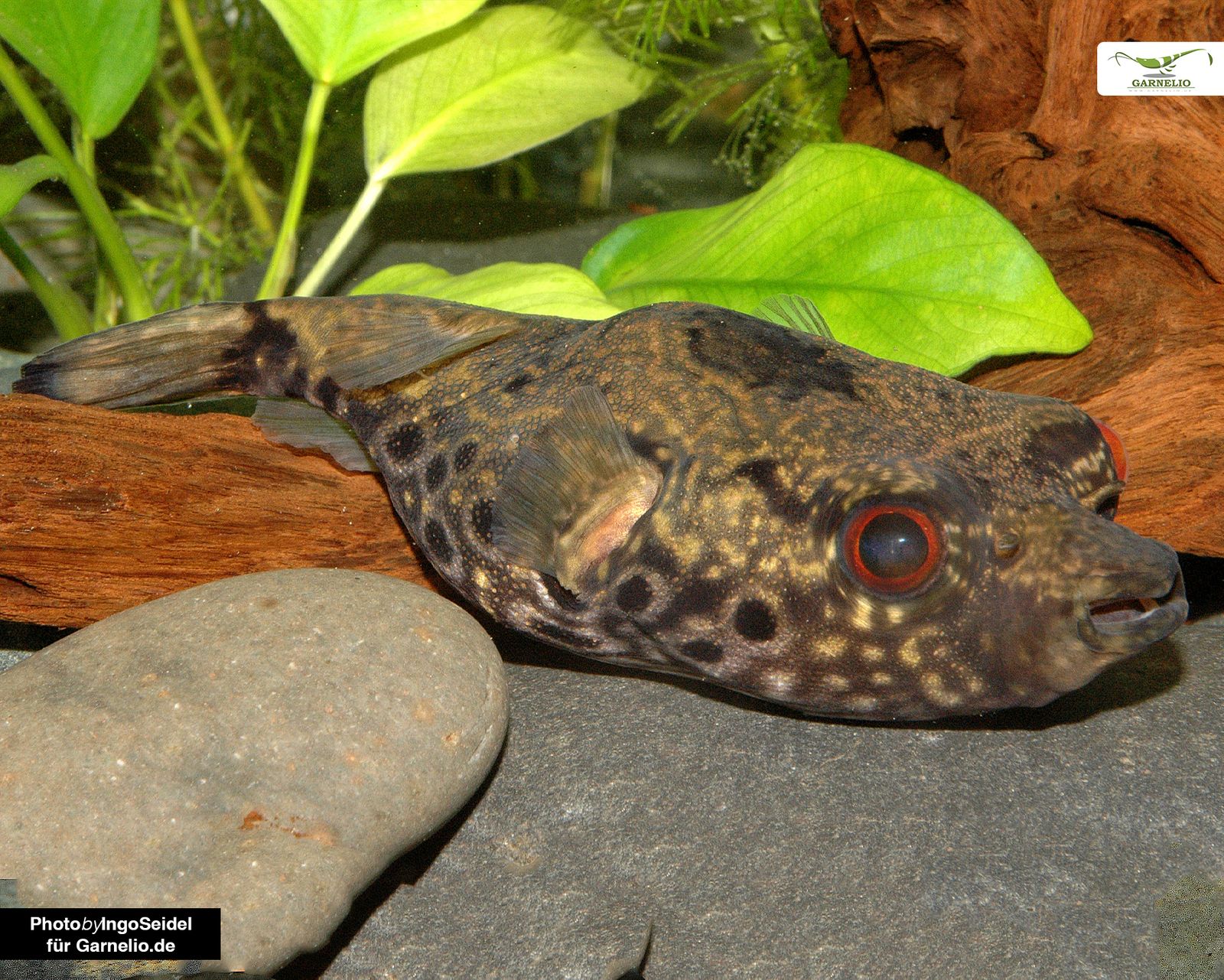
Carinotetraodon travancoricus - pea puffer fish/ dwarf puffer fish
Smallest dwarf pufferfish, which grows to just under 3 cm and is very popular in the trade as a snail destroyer. Can already be kept in 60 liter aquariums, but needs good infrastructure when kept in groups to distribute intra-species aggression and to provide retreat possibilities. Reproduces with very good feeding. Can be socialized with fast fish and conditionally also with very large snails in appropriate aquarium size, other invertebrates are likely to be pecked at and also eaten. Becomes pushy and a fin biter if animal food is not sufficient.
Water values: GH 5-20, KH 8-15, pH 7.2-8.5, temperature 24-27°C

Colomesus asellus - Assel Pufferfish/ Parrot Freshwater Pufferfish
Representsa rarity from an aquaristic point of view, which is also quite peaceful and thus suitable for community aquariums from 80 cm edge length. Requires good planting and accurate acclimation to new home.
Water values: GH 5-15 °dGH, pH 6,0-7,5,temperature 22-28 °C
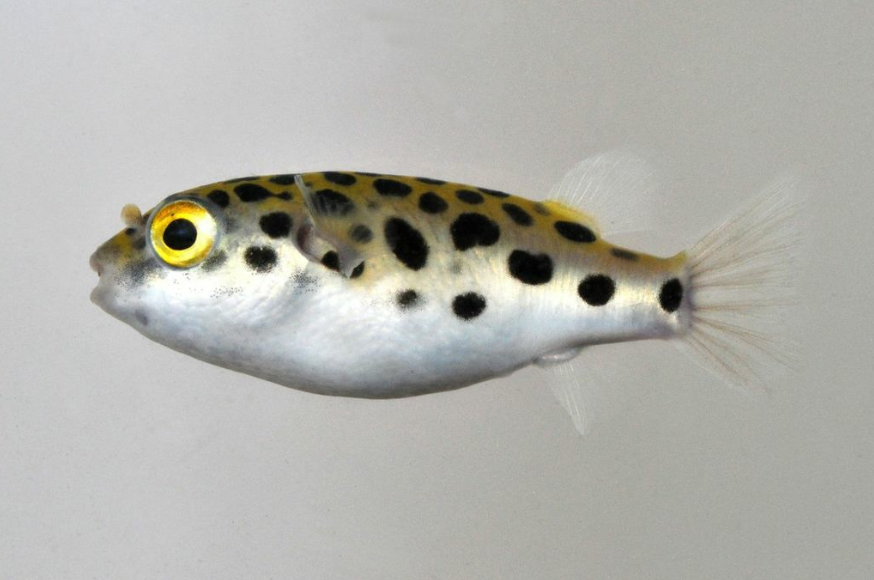
Tetraodon miurus - Brown Pufferfish/ Suitcase Pufferfish
Also called Congo Pufferfish- derived from habitat in the African Congo Basin. Counts among the predatory puffer fishes with gullet teeth. Has rather frontal eyes. Needs good current and perfect water hygiene. Keeping in groups from 150 cm edge length recommended, rather from 500 liters, reaches final size of almost 20 cm and is very voracious. Likes to burrow, behaves territorially and aggressively and attracts attention by active biting, requires mandatory visual protection in the form of infrastructure.
Water values: GH 0-15 °dGH, pH 6,5-7, temperature 24-28 °

Carinotetraodon irrubesco - Redtail pufferfish
Cute little puffer fish that grows to just 4.5 cm and also socializes well with short-finned and nimble snails. Not with invertebrates or large finned fish because of its tendency to nibble fins. Does not need extra salt added to the water. Can be kept in pairs or groups starting at 60 liters. Males have red tail fins, females have speckled bellies. Breeding succeeds rather by accident.
Water values: GH 10-20, pH 6,5-7,5, temperature 22-26 °C, no salt additions necessary
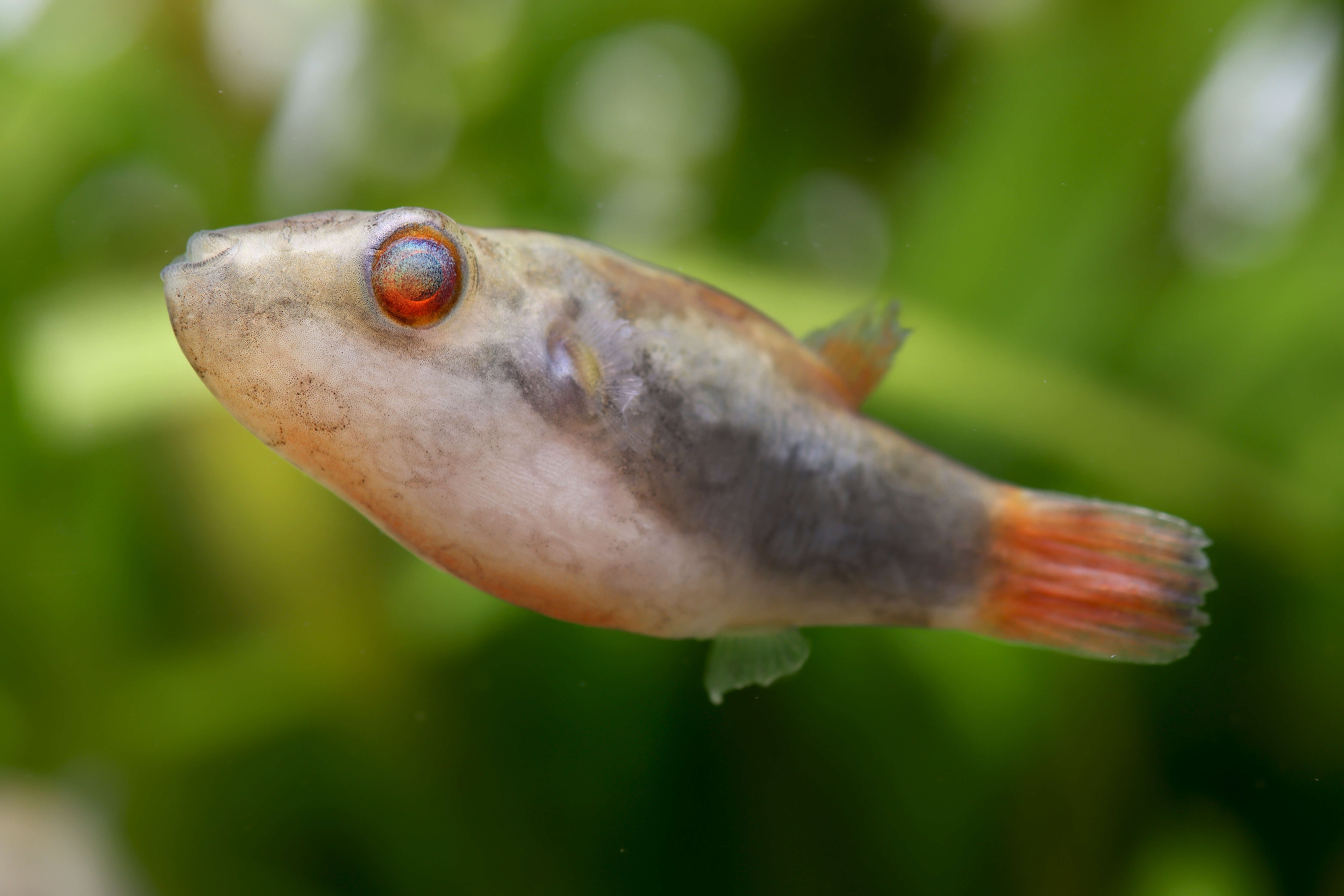
Tetraodon mbu - Goldring Pufferfish
Originates from Africa, grows to almost 60 cm and grows rapidly, therefore needs at least 760 liters and more. Features giraffe-like pattern on the square body. Can be socialized with large fish. Also feeds on smaller fish and invertebrates. Is a true rarity and very rare in the trade at all.
Water parameters: GH 10-40, pH 7-7.5, temperature 24-28 °C, salt addition recommended
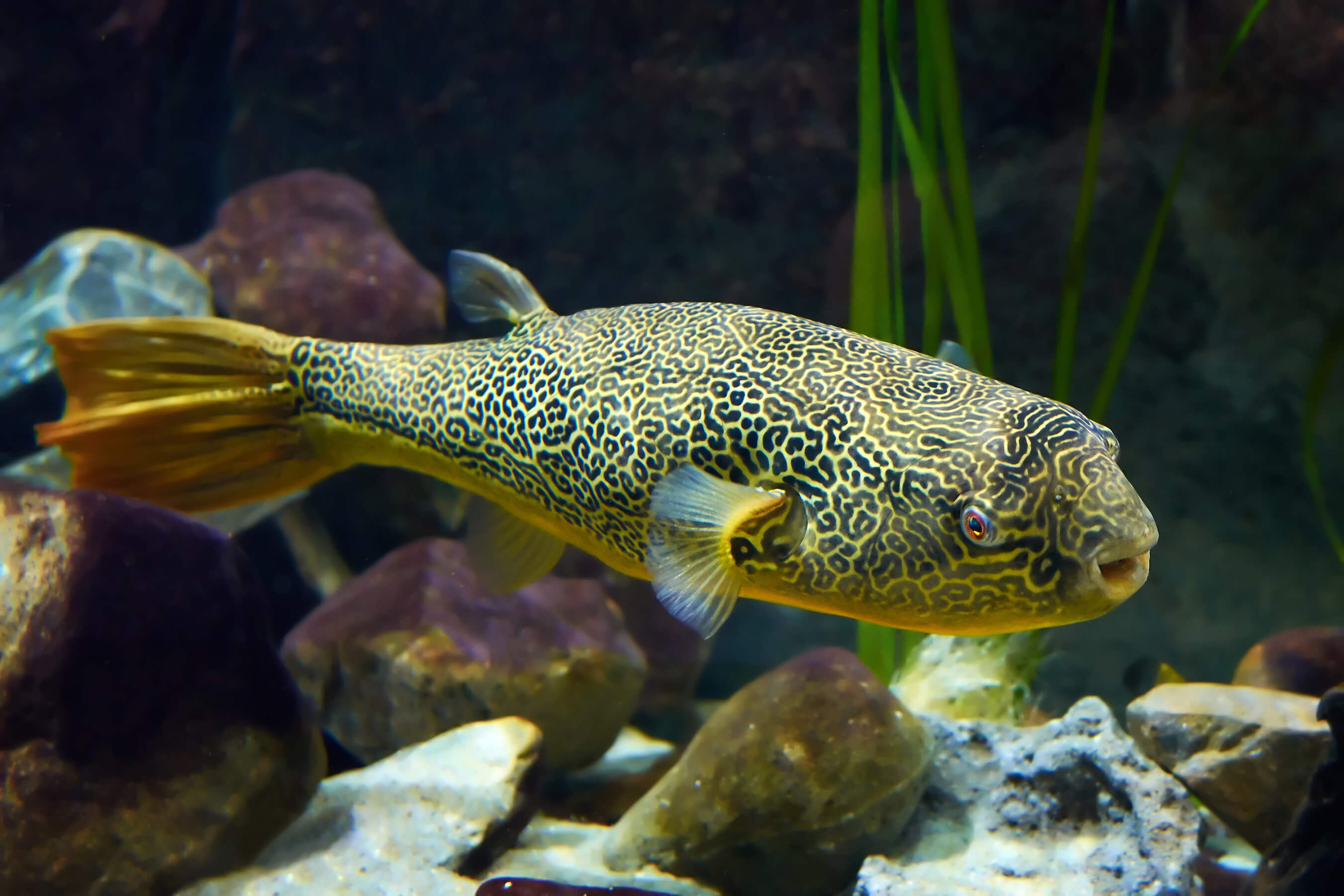
Mekong Suitcase Pufferfish - Tetraodon suvattii
Is also called pighead or pig-nosed pufferfish and originates from Asia. Grows to about 15-17 cm and should if at all only be socialized with fish from 15 cm upwards. Can be kept alone or in a group. Requires sufficient caves and should rather be maintained by experienced aquarists. Sand as substrate is suitable, because it burrows into it in places. Can become hand-tame and eat from blunt tweezers.
Water parameters: GH 10-20, pH 6,5-7,5, temperature 22-26 °C
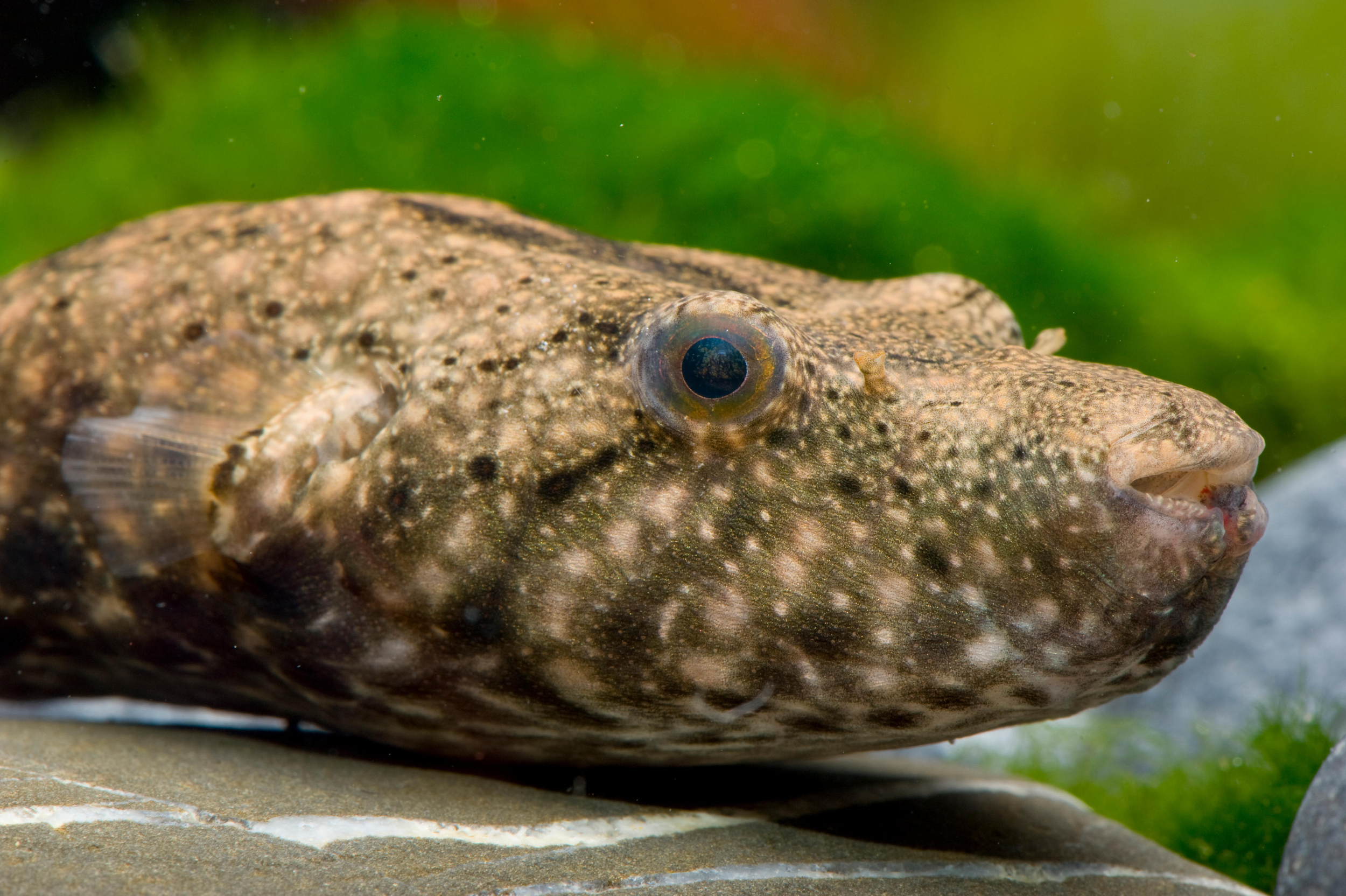
Tetraodon baileyi - shredded pufferfish
Extremely interesting appearance, originates from Asia. Uses the protruding "scraps" as bait and thus feeds as a lurker on invertebrates and small fish. Grows to about 15 cm and needs very clean water with proper oxygen. Breeding in captivity is probably not possible. Should rather be kept alone. Rarely available in the trade.
Water values: GH 5-15, pH 6,9-8, temperature 23-27 °C
